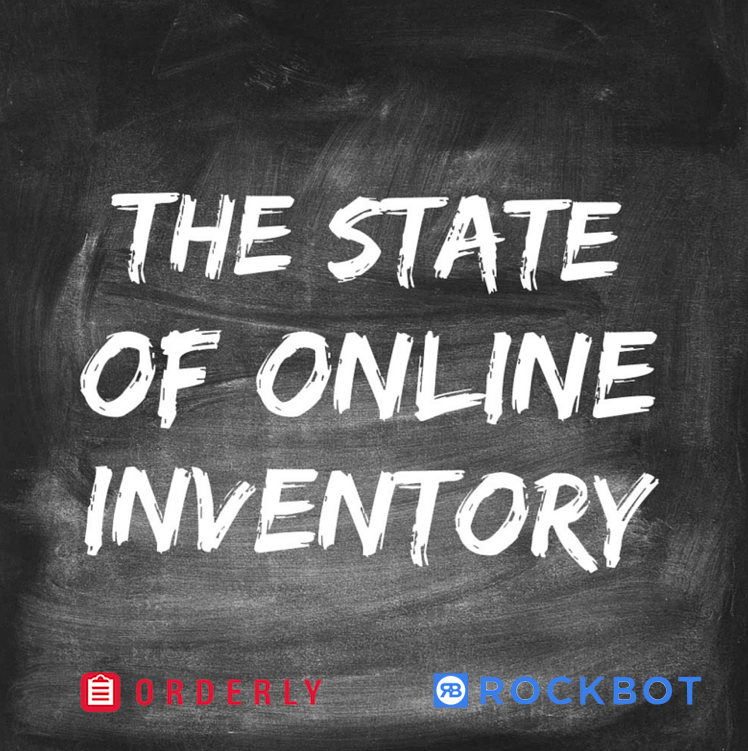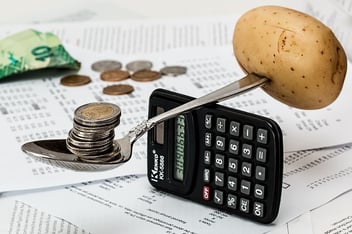Please enjoy these insights from BOH expert and Orderly Marketing Manager, Joy Ugi. Joy is part of Rockbot's guest blogging series, where we bring in industry experts to help you at every stage of owning a restaurant.
For restaurant management, three back-of-house tasks represent a majority of their time: invoicing, ordering, and inventory. TWEET THIS
The digital age has blessed the restaurant industry with technology that makes front-of-house tasks (such as taking reservations and scheduling) and back-of-house tasks (such as scheduling shifts and managing the inventory process) much more efficient.
As with most emerging markets, the software operators and owners are starting to use has upsides and downsides, benefits and fatal flaws.
We talked to independent restaurant owners, operators and chefs across the country about the challenges they’re up against when it comes to technology that is meant to help them get through the painstaking inventory process. They expressed their delight, disillusionment, and discouragement and gave valuable feedback about the state of inventory software in the restaurant industry today.
What You Should be Looking for in Restaurant Inventory Software
Operators and managers know taking regular inventory is a must. However, this important task often gets sidetracked because it’s so time-consuming. It’s no secret inventory has traditionally been an inefficient, irritating process.
When a restaurant decides to purchase inventory software, management is usually looking for ways to reverse current manual and time-consuming processes:
- Easy to use, intuitive user interface
- Ability to view low inventory levels at a glance
- View a history of items in inventory
- The ability to export data into a CSV file to send to accountants
- Accessible knowledge base
- Phone and email support
This is only a start of the long list of features managers would like to see in an inventory solution. But without hitting every item on the wish list, these cover a wide swath of a restaurant’s needs when it comes to using inventory software.
Managers go into the inventory software buying process with these specific goals in mind. Sometimes they are disappointed while other times their needs are met. It all depends on a few factors.
The POS + Inventory Add On
Sometimes inventory software comes as a package with POS software. Managers feel they’re staying organized by keeping their data all in one place. The operator doesn’t have to jump from one piece of software to another to complete inventory.
The disadvantage is that POS systems are often clunky and immobile. This isn’t a practical solution for inventory, which is typically most efficient when someone can walk around the kitchen and complete shelf-to-sheet counting and valuation.
Managers, operators and chefs are frustrated by the fact they own inventory software through their POS, but can’t use it in a practical way to complete the task. Inevitably, they cancel the expensive inventory add-on and go back to doing inventory by hand.
The solution to this quandary is simply. Back-of-house technology, although bringing tech to a more traditional area, needs to create software that looks and operates more like front-of-house technology. TWEET THIS
Consumer-facing apps are easy to use - almost anyone can figure out how to operate them. This type of usability and mobility are what POS add-ons need to give to restaurant managers.
Over-Promised, Under-Delivered
Another frustration managers express about restaurant inventory software is being over-promised about the performance level or feature-richness of the technology. In reality, they are under-delivered on the qualities that convinced them to buy the software.
The silver lining is this technology often does what it said it would on a basic level: Take inventory. However, it accomplishes this without all the bells and whistles the buyer expected.
Whether by their own misunderstanding or over-marketing on the technology’s part, restaurant operators and managers are frustrated by:
- Setup Tasks: Most inventory software requires the user to complete a standard amount of setup in order for the technology to work. Managers are frustrated when the software company doesn’t clarify or downplays the exact amount of time it will take.
- Features: Fancy features are a hot selling point. Often a manager is made to believe the software will complete a specific task just to find out that’s not how it works.
- Training: Since these aren’t consumer-facing apps, inventory technology often has a more complex design. That means training about the product is especially important for managers who will be using it or training their own staff to use it. Without this training, users are left guessing about best practices.
Although these are important items software companies need to deliver on, there’s an even more significant burden weighing down restaurants.
Cost Outweighs the Benefits
There are many benefits of completing the inventory process through technology. In most cases, it takes less time, a manager can more efficiently see what’s in stock, and reports can be sent to accountants quickly.
However, restaurant owners and operators often shell out a hefty sum of money to invest in inventory software. And when the features they need aren’t there or it’s too inconvenient to use practically, restaurants have just wasted money and are back to completing the inventory process manually.
In an industry where margins are about three percent, it’s essential owners and operators invest wisely in technology that will be useful to their establishments so they can break even - and hopefully make a profit - as quickly as possible.
When a restaurant manager or owner invests in inventory software that doesn’t work for the restaurant, it just adds insult to the already painful injury of the inventory process.
Final Thoughts: The State of Restaurant Inventory software
The state of restaurant inventory solutions are twofold.
On one hand, independent restaurant owners are excited about the possibilities inventory software offers. Most are ready to embrace solutions to make this back-of-house task much more efficient. In addition, they are ready to make a safe investment in a solution that will meet their needs.
On the other hand, restaurants aren’t completely happy with the inventory technology available to them today. Frustrations when it comes to the usability of inventory software are understandable, and there’s no reason why companies who provide these solutions cannot make changes to meet these needs:
- Mobility: Our digital world revolves around being able to mobilize anything, especially when it comes to software. Inventory technology needs to be able to go wherever an owner, manager or chef goes.
- Clarity: Restaurant inventory software companies need to be specific about what setup, features, and training they offer. It’s okay not to offer it all; just be honest about what you do and don’t have.
- Reasonable Pricing: Even the most successful restaurants don’t have huge margins for their businesses. Inventory technology needs to be affordable and match the level of helpfulness it gives restaurants.
If restaurant inventory software can meet these needs, the demand for this type of technology in restaurants will grow exponentially. Managers and operators won’t be able to resist the efficiency and helpfulness.
Bio: Joy Ugi writes about restaurant technology, operational efficiency, and food purchasing trends for Orderly - the #1 restaurant app for online ordering, paperless invoicing, and painless inventory.
We created an entire list of restaurant technologies you should be looking out for in 2015. Click the link below for our restaurant technology buyer's guide!







